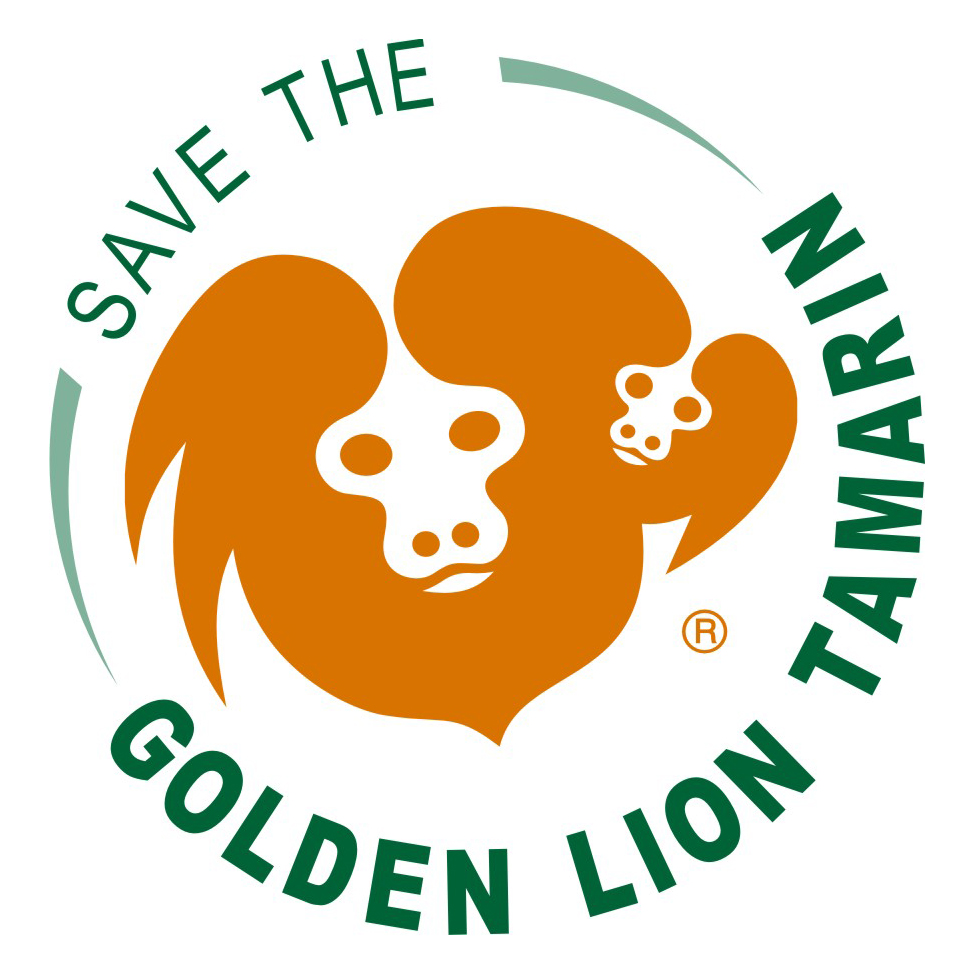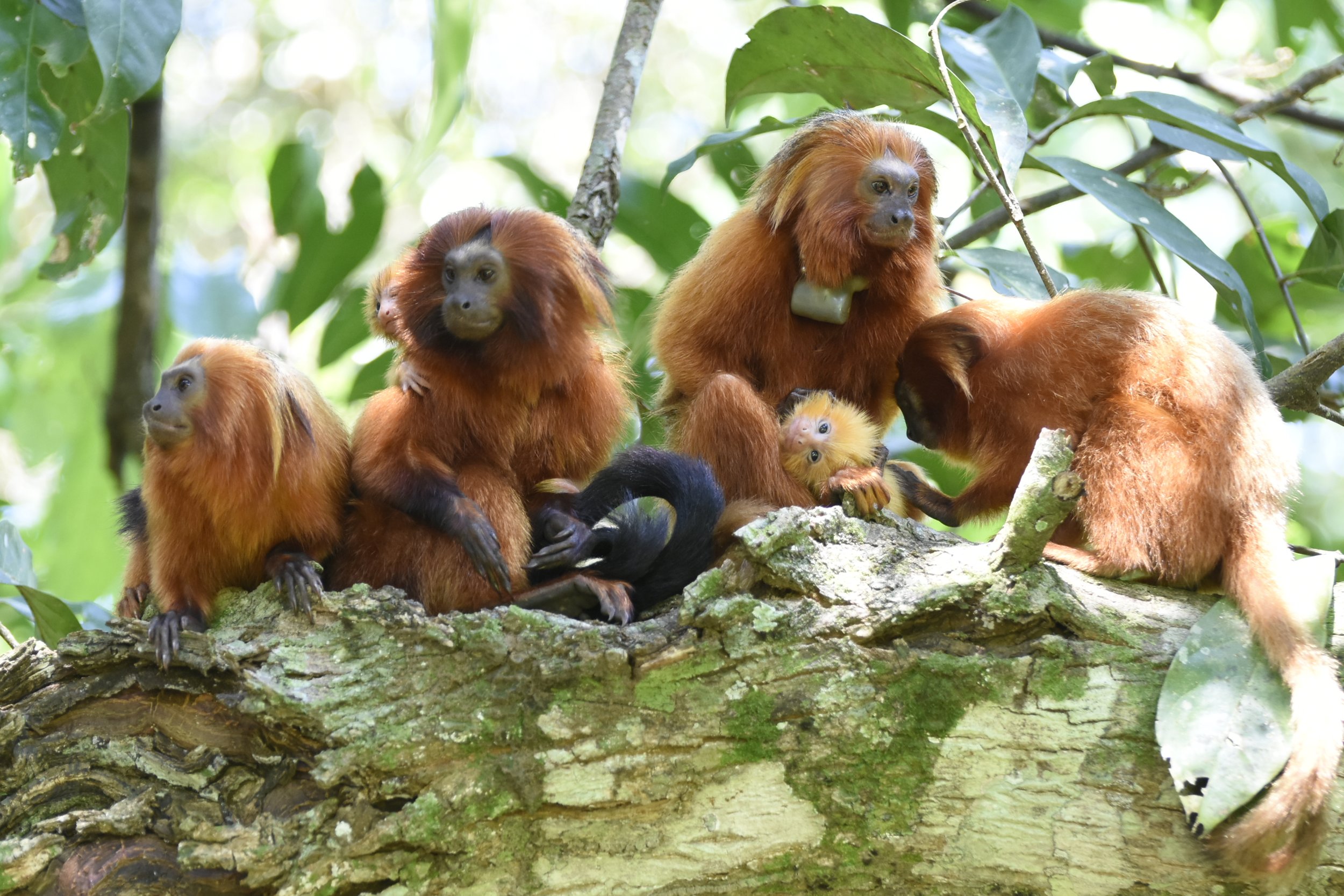How scientists helped zoo-born golden lion tamarins survive in the wild
Reintroductions to their native Brazilian forests nearly 40 years ago were based on intense interventions and ‘educated guesses’ but now are supported by the species’ learned wild behaviors.
By Benjamin B. Beck
Photo by Andréia Martins/AMLD
If a hot viral disease like yellow fever killed every wild golden lion tamarin, would we want to start a “de-extinction” program? Resurrecting the species would involve breeding hundreds of individuals from the 500 that currently survive in zoos and similar institutions.
Jennifer Mickelberg, International Golden Lion Tamarin Studbook Keeper and Vice President for Collections and Conservation at Zoo Atlanta, explains that 169 zoos around the world currently collaborate in the management of this endangered species as an “insurance population” for reintroduction should a disaster occur in the wild. Jennifer uses detailed pedigree records to recommend pairings of individuals to ensure the zoo population retains as much genetic diversity of its wild founders as possible (currently 96.1% - International Studbook/2021). But increasing breeding alone would not be sufficient.
We would also have to program them with what tamarins need to know to survive in the wild: what to eat, how to find it, where to sleep, how to avoid predators, and how to find their way around in the forest. Wild golden lion tamarins (GLTs) pass this knowledge from one generation to the next. Youngsters observe their parents and older siblings, and learn the essentials early in life. Some call this a “tradition,” even a “culture.” The Guardian, an influential daily newspaper, recently wrote about studies of culture in a variety of mammals and birds
Scientists are discovering that if a group of animals becomes extinct, or exists only in zoos, the “wild culture” becomes extinct. Once it’s lost, it’s lost.
Or maybe not. In 1983, when the number of wild GLTs was perilously low, a Brazilian-American conservation effort, the predecessor to Save the Golden Lion Tamarin and Associação Mico-Leao-Dourado, began a now-35-year program to restore them. One strategy was to reintroduce captive-born GLTs to the wild to boost numbers. It ultimately succeeded but the first reintroductions were shaky.
The Guardian quotes scientist Amanda Brakes: “… the tamarin researchers developed an intensive post-release programme, including supplementary feeding and the provision of nest sites, giving the monkeys time to learn necessary survival skills for the jungle. This helping hand doubled survival rates, which was a good start. However, it was not until the next generation that the species began to thrive. By giving them the opportunity to learn individually in the wild and share that knowledge, the next generation of tamarins had a survival rate of 70%, which is just amazing.” Had we “reignited” a survival culture in the former zoo tamarins?
As Brakes notes, the reintroduced zoo tamarins could not at first find sufficient food, avoid predators, navigate in the forest, and find secure sleeping sites. That was not surprising; they had a survival culture adapted to the easy life in a zoo. The first breakthrough was opportunistically pairing a wild-born GLT with a zoo GLT, and reintroducing them together. The captive-born thrived and reproduced, probably because she could learn survival-critical behaviors by observing her wild mate. So, a zoo-born GLT could learn to survive in the wild. But there were too few wild-born GLTs to pair with each of the 146 zoo-borns.
We began to support the zoo-borns intensively after we reintroduced them to Brazilian forests, giving them gut-busting amounts of food, artificial shelter boxes, and veterinary care. We rescued them if they got lost, and shooed away predators. As our colleague Carlos Ruiz Miranda of Brazil’s State University of North Fluminense concludes, these captive-born GLTs “never became masters of the forest….but the post-release management allowed for animals that may have been just barely good enough to survive [long enough] in the wild to have offspring.” (They certainly knew how to make and raise babies.)
And those babies, the first generation born in the forest, somehow acquired many of the skills to survive. We don’t really know, even now, how the first ones learned. Their parents and siblings were unskilled and therefore were poor models. We think the infants learned rapidly on their own, in a stimulating natural environment that they exploited with their rapidly-developing brains, unencumbered by the “zoo culture” that their parents had had to learn to survive in captivity. As Ruiz Miranda speculates, maybe “they were rigged to learn” survival-critical behaviors, suggesting an awakening of long-dormant cognitive abilities once they were in a wild environment.
These first-generation forest-born infants started to reinvent the body of knowledge that is required for a golden lion tamarin to survive in the wild. But another step was required to reinvent the culture. When the first gen babies grew up, they could serve as skilled models from whom their babies, the second wild-born generation, could learn survival-critical behaviors. The population began to soar. Less and less human intervention was required. Now they had reinvented the culture. These were the first truly wild GLTs from the reintroduction program.
I’d like to say that all of these conclusions are entirely documented by scientific evidence. But it’s mostly a set of educated guesses that are plausible, supported by snippets of published information, and supported by comparisons with the ways in which other monkeys and apes learn to survive. The new science of animal culture is based on systematic observations and structured experiments, methodological luxuries that we could not afford when we were struggling to rescue a species from extinction in the 1980s.
De-extinction would be more than a numbers game. It’s also a challenge to re-establish a wild culture. We know how to do that now for GLTs, or at least we know how to give the GLTs time to do it on their own.
Beck is founding director of Save the Golden Lion Tamarin. He is a comparative psychologist specializing in animal cognition and biodiversity conservation.

